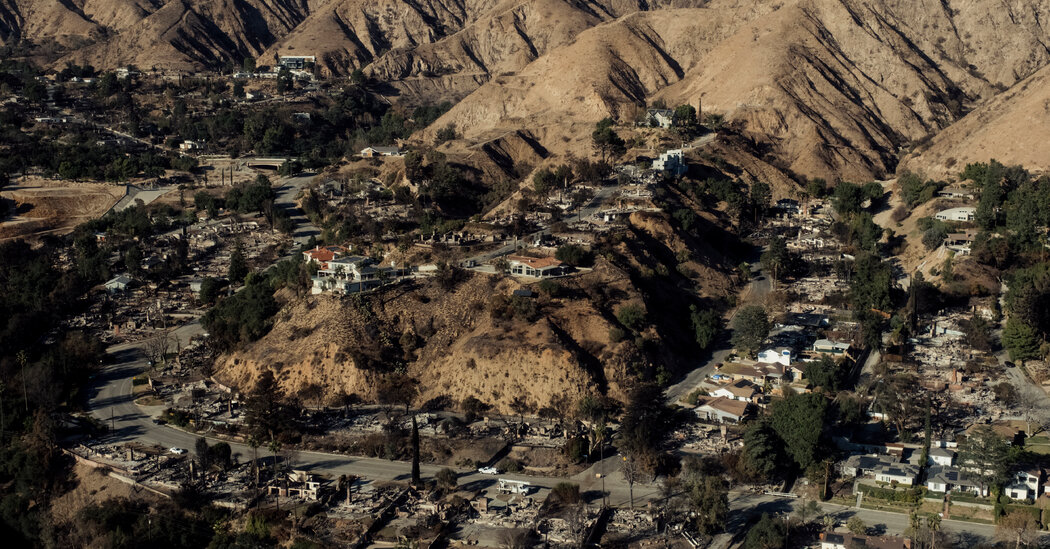While winds and flames continued to ravage Los Angeles, small teams began creeping onto the charred soils left in their wake.
Roughly a dozen members of the California Watershed Emergency Response Teams and the United States Forest Service are studying the edges of the Eaton and Palisades fires to determine what patches of land burned most severely. Soon, they’ll issue hazard maps to help people prepare for what comes next: the near-certain threat of floods and landslides that will loom for days, months and even years while the city recovers.
“After a wildfire, the hazard to the public is not over,” said Jeremy Lancaster, California’s state geologist. He and his team spent Wednesday hiking in the steep canyons that flank the San Gabriel and Santa Monica Mountains. When it rains hard enough, the sediment on slopes like these can swiftly tumble downhill onto houses that increasingly push up against the fire-prone foothills.
The two major hazards after a wildfire are flash flooding and post-fire debris flows. While spongy soils typically absorb water, burned soils can become hard packed like concrete, repelling water as a raincoat would. Water then funnels downslope without much, or any, vegetation left after a fire to keep it in check.
Hazard maps use a combination of satellite images and field testing of soils to show where patches of moderately to severely burned soils could make these post-fire risks more likely. Recommendations for emergency services to engineer barricades against the danger accompany the maps.
While the Los Angeles maps are not public yet, experts said the Palisades fire had mostly low to moderate burn severity, while the Eaton fire was likely to have more moderate to high burn severity.
